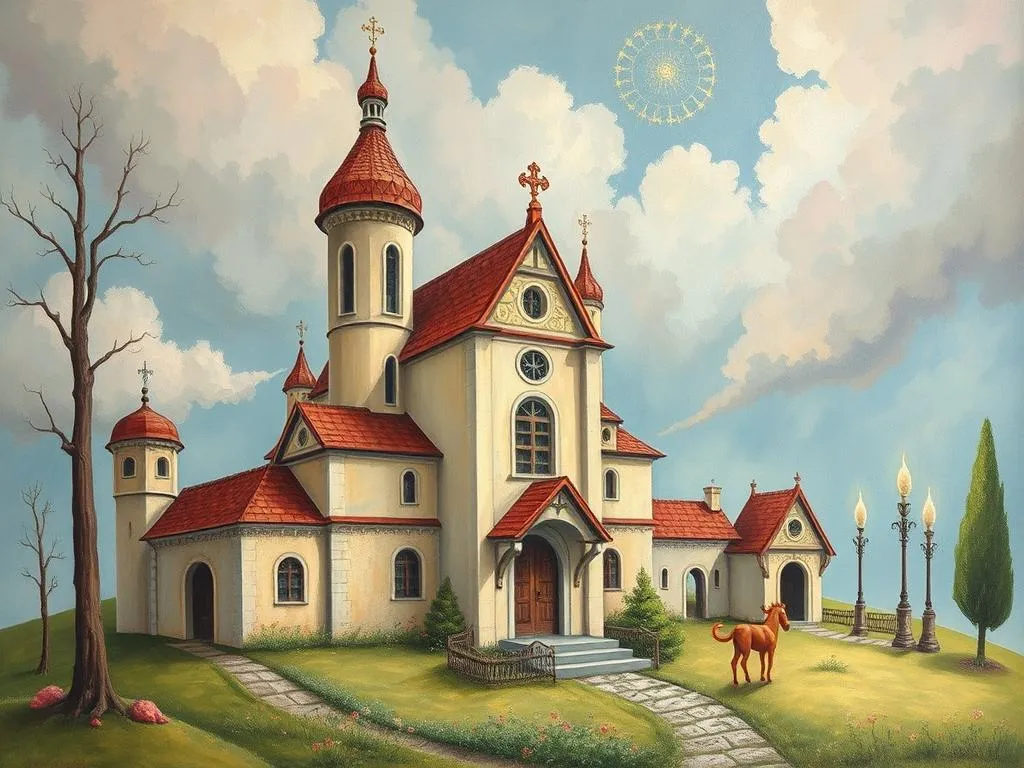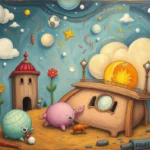
Dreams have long captivated the human imagination, serving as a portal to the subconscious where symbolism and personal experiences intertwine. Among the myriad of dream symbols, architecture stands out, particularly when it draws from the rich and varied heritage of Slavic culture. The unique structures, historical significance, and cultural nuances of Slavic architecture can evoke a wide range of feelings and interpretations when they appear in our dreams. This article explores the symbolism associated with dreaming about Slavic architecture, shedding light on its deeper meanings and personal relevance.
Symbolism and Meaning
Dreaming of Slavic architecture can reveal much about the dreamer’s inner world, often acting as a mirror reflecting their emotional state, cultural identity, and personal history. Common symbols found within this context include traditional houses, castles, churches, and folk motifs. Each of these elements can offer unique insights into the dreamer’s psyche.
When one dreams of a traditional wooden house, often characterized by intricate carvings and bright colors, it may symbolize a longing for home, security, or connection to one’s roots. Such imagery can evoke feelings of nostalgia, suggesting that the dreamer may be seeking comfort or clarity in their current life. The house can also represent the dreamer’s own personality, with its appearance reflecting aspects such as warmth, stability, or perhaps even neglect.
In contrast, a castle might suggest themes of power, ambition, or barriers. Castles are often seen as symbols of strength and protection, but they can also imply isolation or a fortress mentality. If the dreamer finds themselves inside a castle, it may indicate a desire for control or a need to defend oneself from external pressures. Alternatively, if the castle appears dilapidated or abandoned, it can point to feelings of insecurity or a loss of power in waking life.
Churches and other religious structures can evoke feelings of spirituality, community, and moral reflection. Dreaming of a church may indicate the dreamer’s search for meaning or a connection to something greater than themselves. It might also reflect their inner conflicts regarding beliefs or the need for forgiveness. The architectural style of the church—be it baroque, gothic, or traditional wooden—can further inform the dream’s meaning, hinting at the dreamer’s cultural background or personal experiences with spirituality.
Folk motifs, often seen in decorative art and architecture, can symbolize the dreamer’s connection to their cultural heritage. Dreaming of these motifs might suggest a need to embrace one’s identity, traditions, or family history. It can also indicate a desire for creativity and self-expression, urging the dreamer to explore their artistic inclinations.
These symbols, while rooted in specific cultural contexts, can resonate on various levels. Personal experiences, emotional states, and even current life situations can significantly influence how these symbols manifest in dreams. Thus, each dream should be viewed through the lens of the dreamer’s unique circumstances.
Key Scenarios and Variations
The interpretation of dreams involving Slavic architecture can vary widely based on specific scenarios. For instance, if a dreamer finds themselves renovating a traditional house, it may symbolize a desire for personal transformation or healing. This act of renovation can represent a conscious effort to address past traumas or to reclaim aspects of oneself that have been neglected or forgotten.
Conversely, a dreamer wandering through an abandoned village might experience feelings of loss or disconnection. This scenario could indicate a longing for community or a reflection on the passage of time and its impact on relationships and cultural heritage. The emptiness of the village might suggest that the dreamer feels isolated or disconnected from their roots.
Another scenario could involve a festive gathering within a Slavic architecture setting, such as a traditional house adorned for a holiday. This scene can signify joy, community, and the importance of cultural celebrations. It may reflect the dreamer’s desire to reconnect with family or friends, highlighting the value of shared experiences and traditions.
Dreaming of visiting a historic site or landmark, such as the Kremlin or a famous church, can evoke feelings of awe and wonder. Such dreams may symbolize the dreamer’s aspirations, ambitions, or a quest for knowledge. They can also indicate the dreamer’s desire to explore their cultural heritage or to gain a deeper understanding of their identity.
In contrast, if the dreamer experiences a storm or natural disaster threatening a Slavic structure, it may symbolize impending challenges or conflicts in waking life. The storm could represent emotional turmoil or external pressures that the dreamer feels are compromising their sense of security or stability.
These scenarios underscore the complexity of dream interpretation. While the imagery of Slavic architecture provides a rich backdrop for exploration, the specific context and emotions experienced during the dream are crucial for understanding its significance.
Real-Life Connections and Takeaways
Connecting dreams of Slavic architecture to real-life situations can offer valuable insights for personal growth and self-reflection. When a dreamer arises from such a dream, it’s beneficial to take a moment to reflect on their feelings, thoughts, and experiences surrounding the dream. This process can help uncover hidden emotions or unresolved issues.
For instance, if the dream involved a traditional house, the dreamer might consider their current feelings about home and belonging. Are they satisfied with their living situation, or do they feel a sense of longing for a place that feels more like home? Engaging in self-reflection can help clarify what changes, if any, the dreamer may want to pursue in their waking life.
In the case of dreaming about a castle, it can be helpful for the dreamer to evaluate their current ambitions and sources of power. Are they feeling empowered, or do they sense a need to protect themselves from perceived threats? Identifying these feelings can provide insight into personal goals and areas where the dreamer may need to focus their energy.
For those who dream of churches or spiritual structures, exploring one’s beliefs and values can be a fruitful endeavor. Are there unresolved issues related to faith or community that need addressing? This exploration can lead to a better understanding of one’s spiritual path and how it aligns with their life choices.
Additionally, dreams featuring folk motifs might inspire the dreamer to engage with their cultural heritage. This could involve learning more about their ancestry, participating in cultural events, or expressing themselves through art. These actions can enhance the dreamer’s sense of identity and connection to their roots.
Ultimately, dreams serve as a powerful tool for self-exploration. By reflecting on the imagery and emotions experienced during dreams of Slavic architecture, individuals can gain insights that may lead to positive changes in their waking lives. Whether it’s embracing one’s heritage, seeking community, or addressing personal challenges, these dreams can illuminate paths toward greater self-awareness and fulfillment.
In conclusion, dreams featuring Slavic architecture encapsulate a rich tapestry of symbolism and personal significance. By delving into the meanings and scenarios associated with these dreams, individuals can uncover valuable insights about their emotional states, cultural identities, and life aspirations. Encouraging personal reflection and self-discovery, these dreams invite us to explore the intricate connections between our inner worlds and the external landscapes we inhabit. Through this exploration, we can uncover deeper understanding and meaning in our lives.







